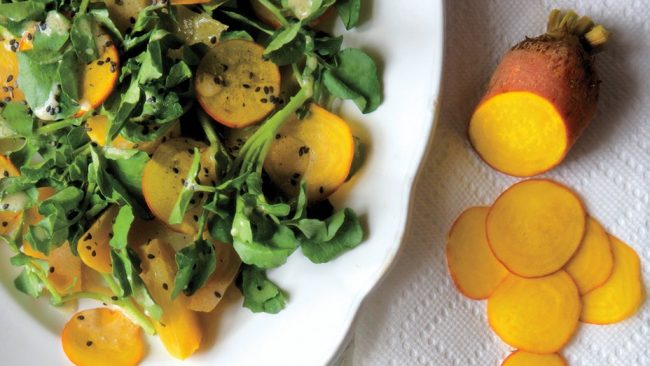Benefits of Miso
Miso, a staple of Japanese cuisine, is yet another probiotic powerhouse. It is made from soybeans, water, and koji (cooked grains or soybeans inoculated with a mold, Aspergillus oryzae, which begins the fermentation process). As the koji enzymes break down the soybeans, the simple sugars created become fodder for bacteria such as Pediococcus halophilus and Lactobacillus delbrueckii. These bacteria break down the sugar into lactic acids that contribute to the flavor of the miso. There are many varieties of miso, and each variety uniquely reflects the microorganisms native to the area in which it is made. This gives the miso an individualized flavor and sometimes a unique appearance. Depending on the type of miso, the aging process may range between two months and three years.
Before you go off to make your own miso soup, there is one important thing to note: the probiotic bacteria in miso can be killed at high heat. You can avoid destroying the beneficial bacteria by adding miso to foods when their temperatures are below boiling.
Ready in: 50 mins
Servings: 4
Ingredients
-
-
6 small beets (about 1 lb.), preferably golden, scrubbed, divided
-
3 tablespoons olive oil, divided
-
Kosher salt and freshly ground black pepper
-
¼ cup white miso
-
2 tablespoons rice wine vinegar
-
1 bunch watercress, trimmed
-
1 teaspoon black sesame seeds or toasted white sesame seeds
-
Instruction
- Preheat oven to 400°. Place 4 beets on a large piece of foil and rub with 1 Tbsp. oil; season with salt and pepper and close up foil around beets. Place on a rimmed baking sheet and roast until tender, 30–40 minutes. Unwrap beets and let cool slightly. Peel and cut into ½” wedges.
- Meanwhile, whisk miso, vinegar, remaining 2 Tbsp. oil, and 3 Tbsp. water in a small bowl. Set dressing aside.
- Thinly slice remaining 2 raw beets on a mandoline. Arrange watercress and roasted and raw beets on a platter and drizzle with reserved dressing; top with sesame seeds.
- DO AHEAD: Beets can be roasted 2 days ahead. Cover separately and chill.
Recipe adapted from bonappetit.com




